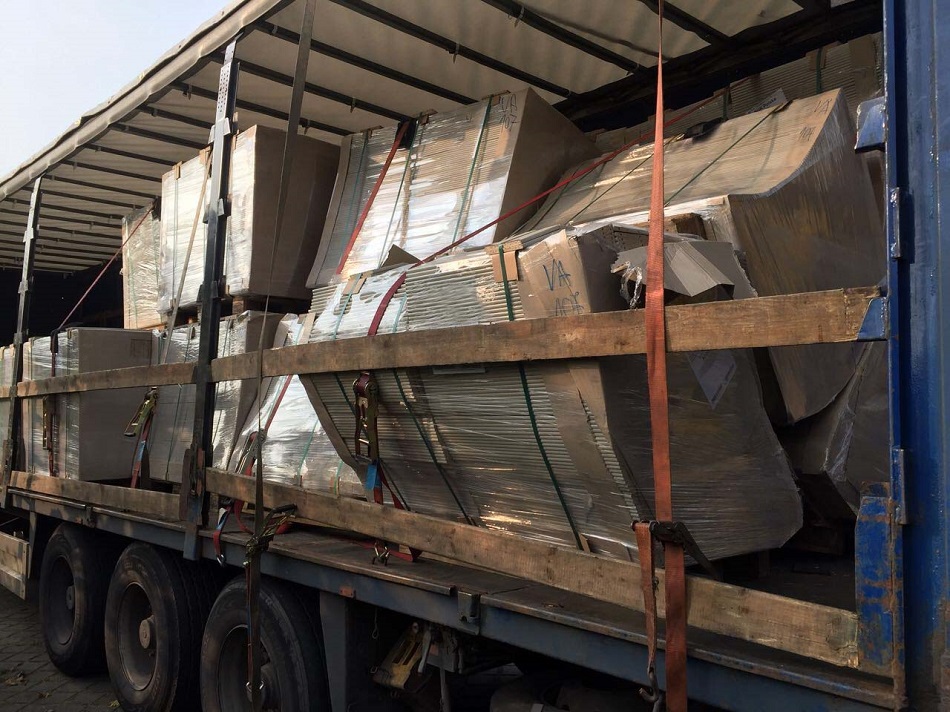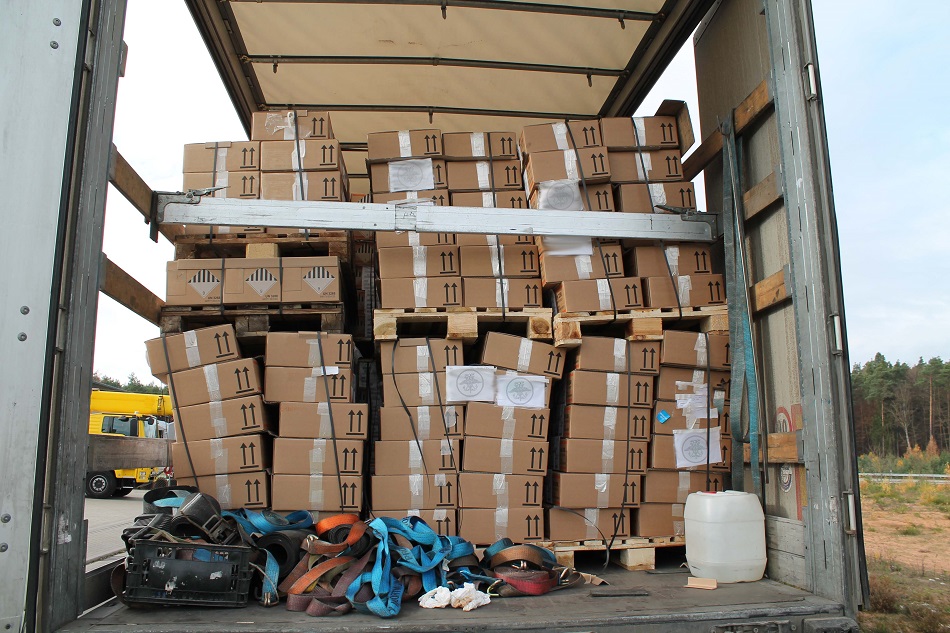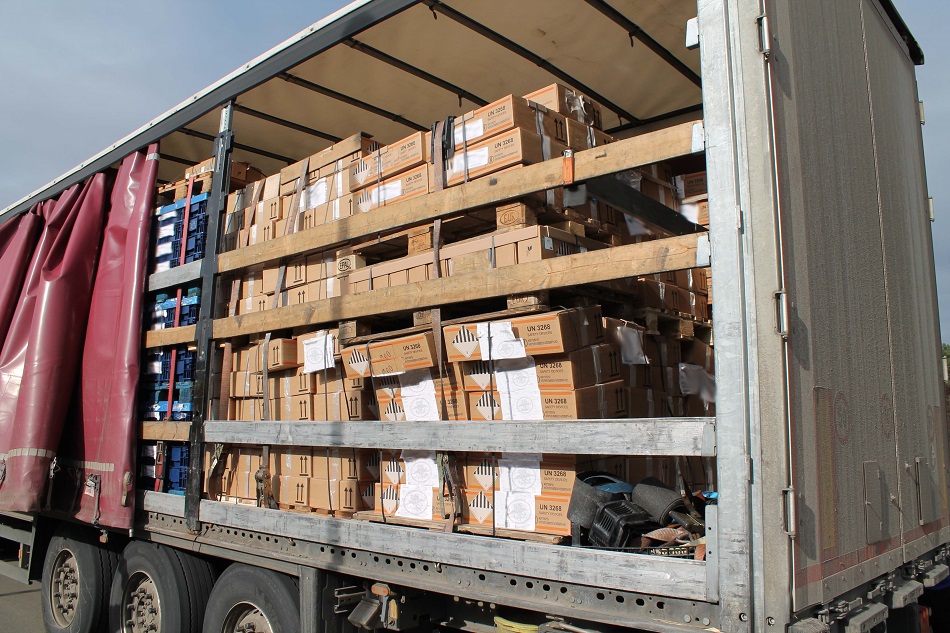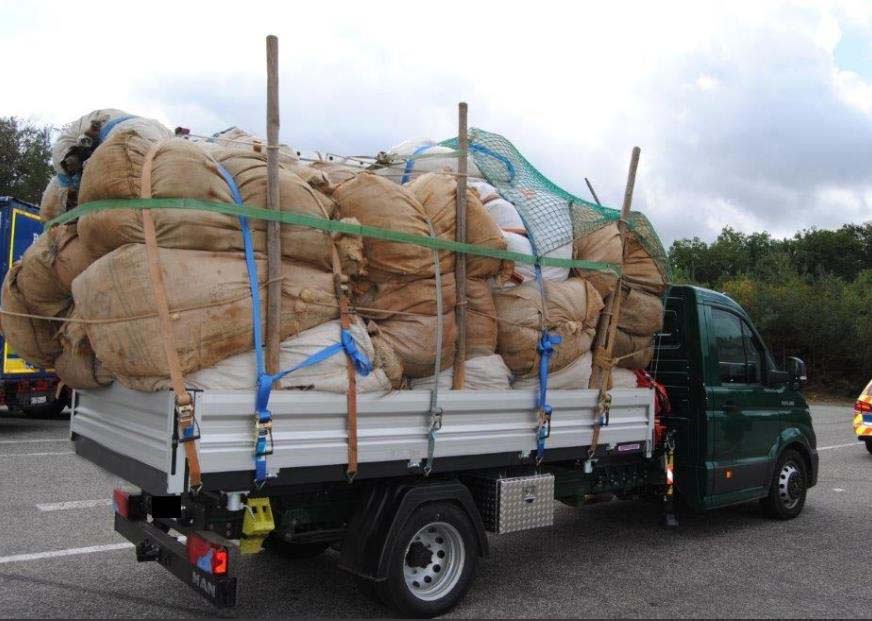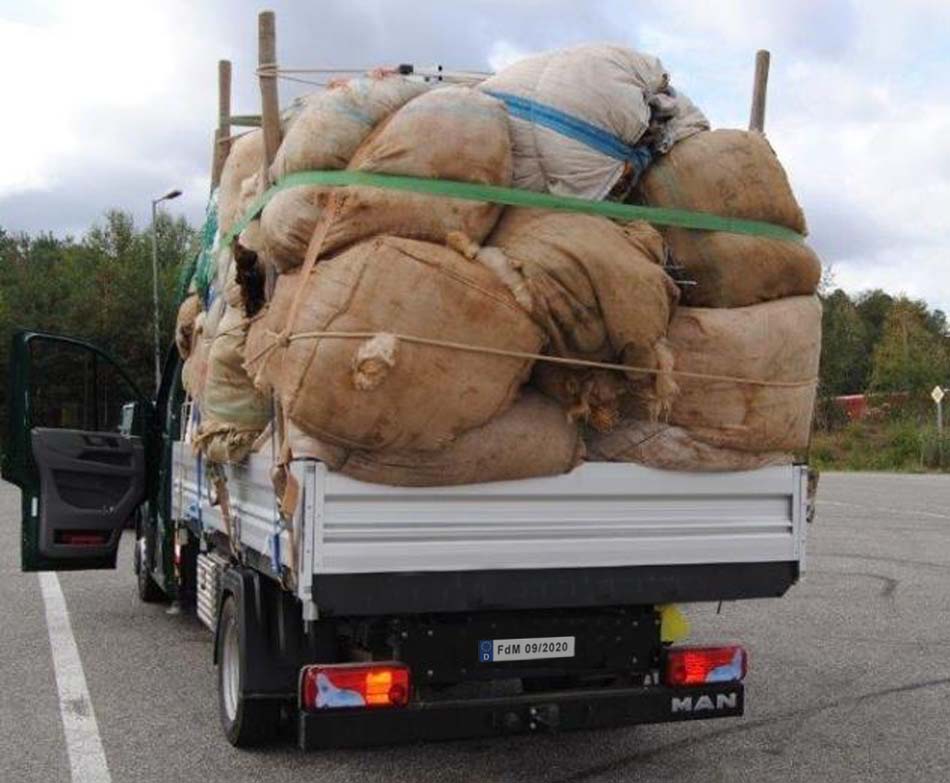| Photo of the month – September 2020 |
[German version] |
| For the start of Autumn, we are pleased to bring you two columns. |
|
 |
 |
| Harvest home | This poltergeist has a name: Poor packaging |
This poltergeist has a name: Poor packaging
Before we start, here are a few jobs that packaging should do:
- Protective function: For instance protecting against environmental influences such as climatic and mechanical stresses
- Storage and transport function: For instance to create load units to allow safe and nevertheless economical transport
Are “safe” and “economical” not mutually exclusive? No! Proper load units help to avoid gaps in the load and thus significantly reduce the effort involved in securing the load.
In this case, the packaging does not even come close to fulfilling any of the functions mentioned above. When you see pictures like this, you have to ask yourself how a responsible shipper can send their goods out in such a state. The driver tried to secure the load with tie-down lashings and edge protectors, but the load units were too unstable. They were not stackable and it is questionable whether they could have been secured effectively if loaded in a single layer without damaging the load itself.
Here is the next fine specimen of a load unit.
The packaging itself, i.e. the boxes, appears to be suitable for the way in which a load unit was created here. The fact that the boxes are not quite modular and do not reach the edge of the pallet is a significant shortcoming that would never be seen from a good packer.
If the packaging does not reach the edge of the pallet, this always causes a gap between the load units, which in turn makes tight-fit loading impossible. And this makes it more difficult to secure the load, because a tie-down lashing not only pulls the pallets downwards but also presses them together. The gaps in the load mean that the whole structure gives way and the tie-down lashing becomes loose and no longer does its job. And all this for the simple reason that the cartons have not filled the pallet.
Since these are hazardous goods and the cartons must therefore be approved, it is not surprising that they are clearly strong enough to withstand the stacking crush pressure on the pallet and even the load from the pallet stacked on top. But the way that these approved cartons have been used to form a load unit is not, however, also “approved”.
The view from the side shows that the load units containing hazardous goods have fallen apart to all sides. Even the simple measures of using strong intermediate dunnage and proper strapping with edge protectors etc. would improve the situation considerably.
Recently spotted in Germania!
The Germanic tribes were known for their hardiness and inventiveness. “There’s nothing that can’t be done” seems to have been their motto, and so it’s not difficult to believe that some of these tribesmen had a hand in this as well. Clearly, the infamous skyhooks were already in use back then.
“Loose” sheep’s wool is being transported here. The fence posts were inserted at the sides, connected together in pairs, partly with belts and partly with ropes, and the load was lashed down. We do not know whether the green belt, which, judging by the way it is used, appears to be a cummerbund, is actually connected to the vehicle.
But today we are talking about the packaging. The packaging actually consists only of large sacks into which the wool has been stuffed more or less firmly. “Load units” like this cannot be classed as “general cargo”. Instead, they have to be transported in the same way as bulk goods, because the vehicle itself has to take over the job of securing such loads.
If such a vehicle is not available, box pallets can help to give the load shape so that it can be handled and secured like general cargo.
If the wool is pressed into firm bales, it can of course be treated as general cargo, but this will probably be too much effort for transporting the goods over such short distances.
But this attempt to “secure” the load undoubtedly deserves a prize for creativity.
Your Load Securing Team
Back to beginning

